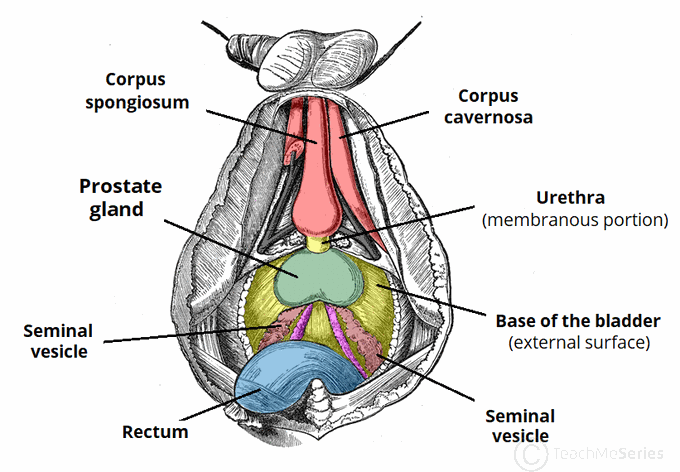


Prostate Anatomy
The prostate is the largest accessory gland in the male reproductive system. It secretes proteolytic enzymes into the semen, which act to break down clotting factors in the ejaculate. This allows the semen to remain in a fluid state, moving throughout the female reproductive tract for potential fertilisation.The prostate is positioned inferiorly to the neck of the bladder and superiorly to the external urethral sphincter, with the levator ani muscle lying inferolaterally to the gland. Most importantly, posteriorly to the prostate lies the ampulla of the rectum.Traditionally, the prostate is divided into anatomical lobes (inferoposterior, inferolateral, superomedial, and anteromedial) by the urethra and the ejaculatory ducts as they pass through the organ. However, more important clinically is the histological division of the prostate into three zones (according to McNeal): Central zone – surrounds the ejaculatory ducts, comprising approximately 25% of normal prostate volume. Transitional zone – located centrally and surrounds the urethra, comprising approximately 5-10% of normal prostate volume. Peripheral zone – makes up the main body of the gland (approximately 65%) and is located posteriorly. The arterial supply to the prostate comes from the prostatic arteries, which are mainly derived from the internal iliac arteries. Venous drainage of the prostate is via the prostatic venous plexus, draining into the internal iliac veins. The prostate is flanked by the two neurovascular bundles that travel through the pelvic floor towards the penis, supplying it with nerve fibres and blood vessels for the corpora cavernosa.

